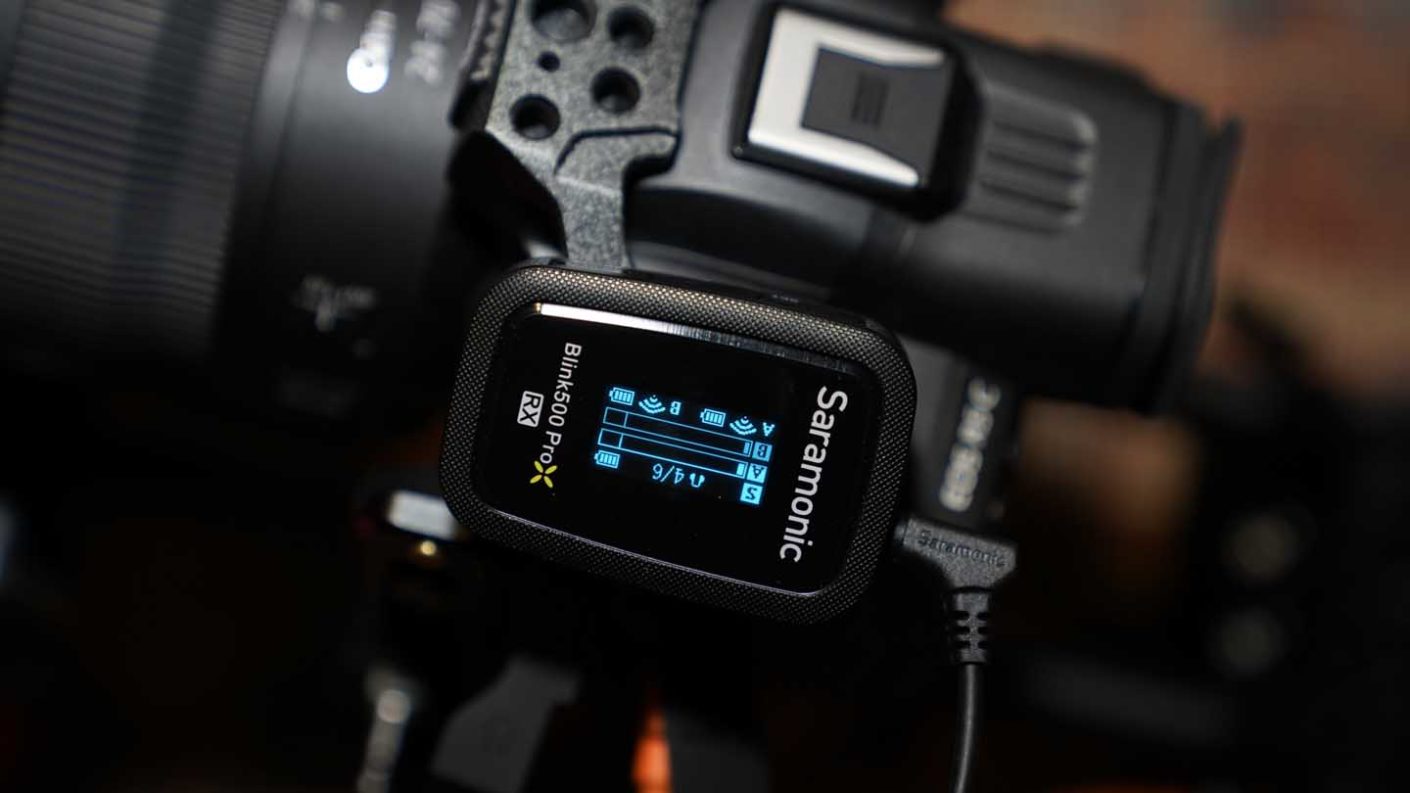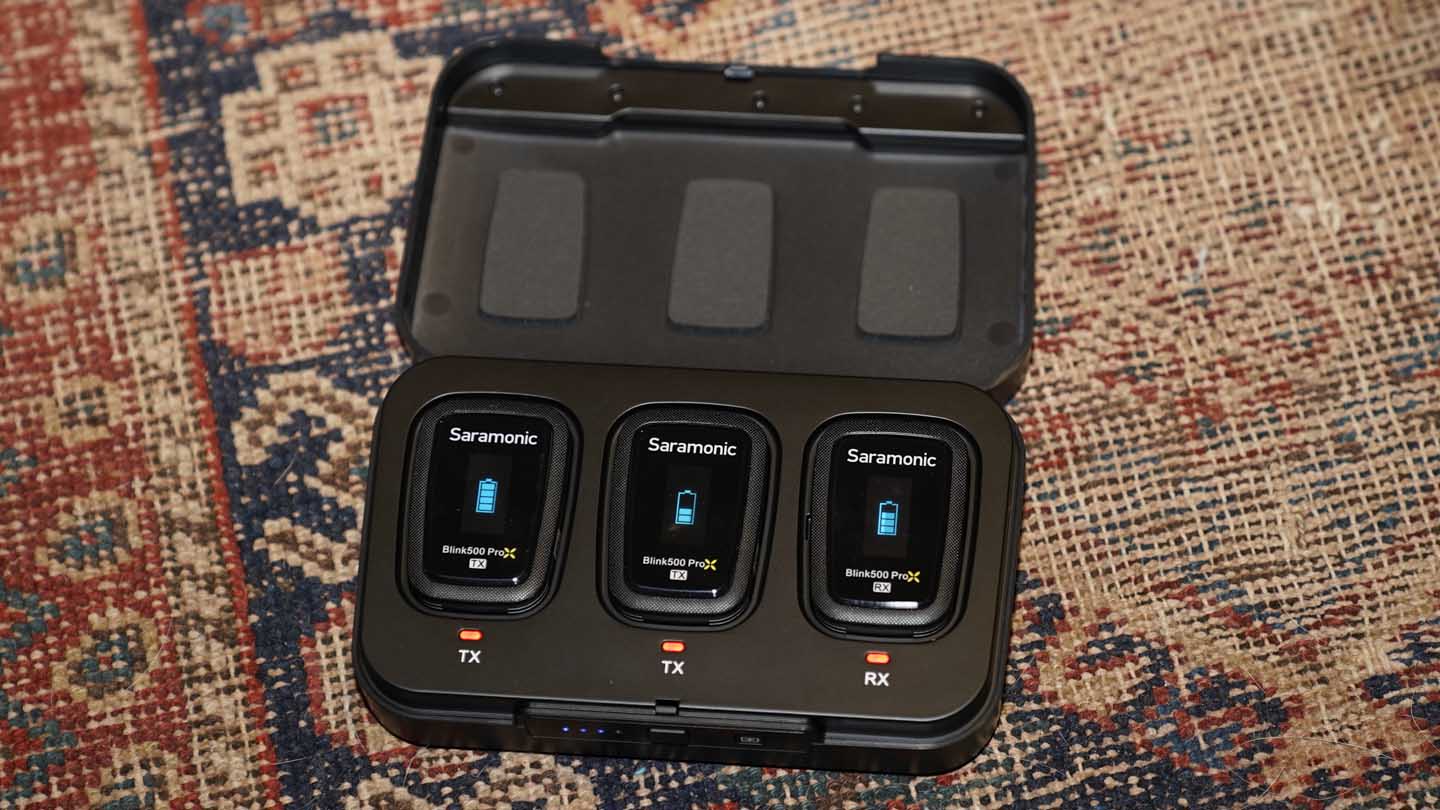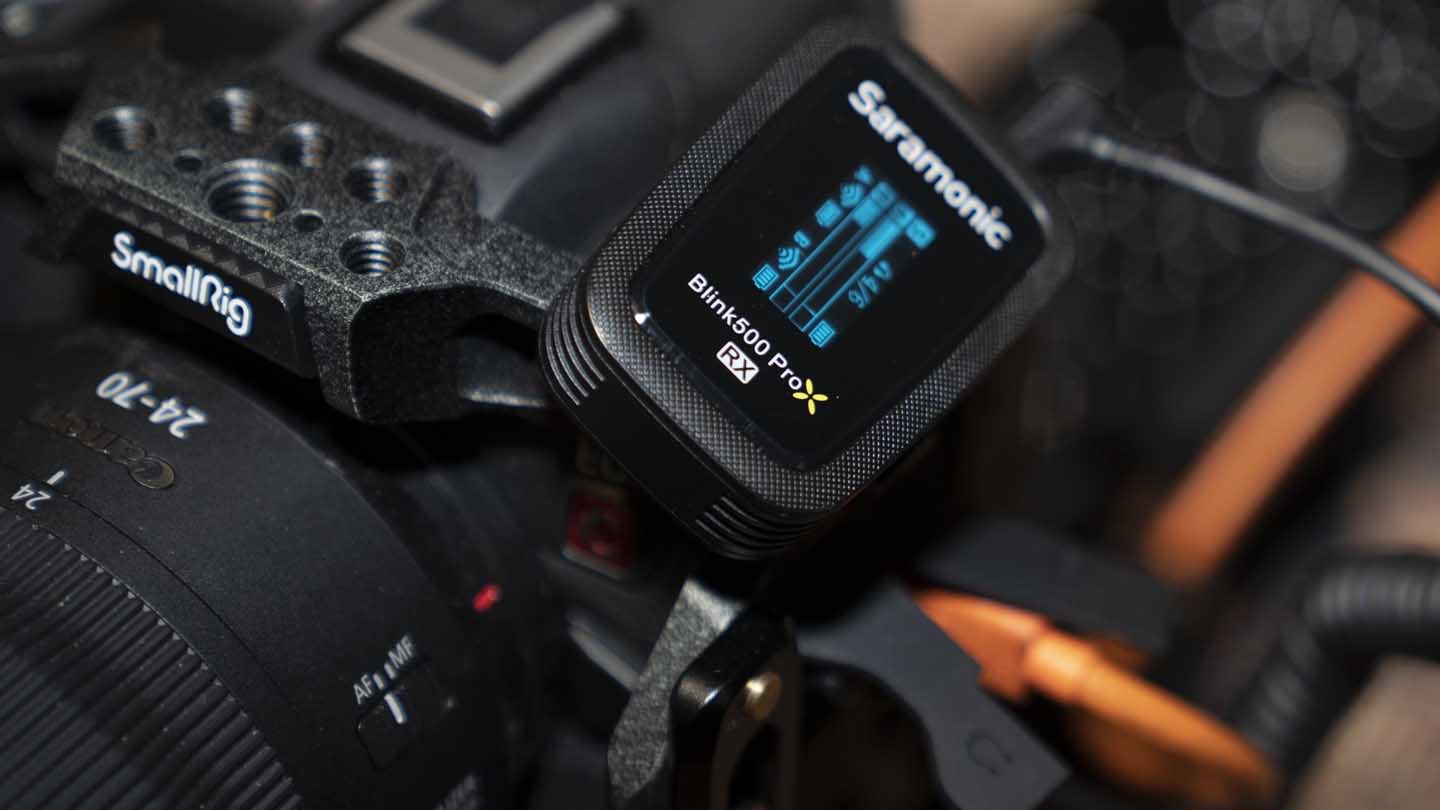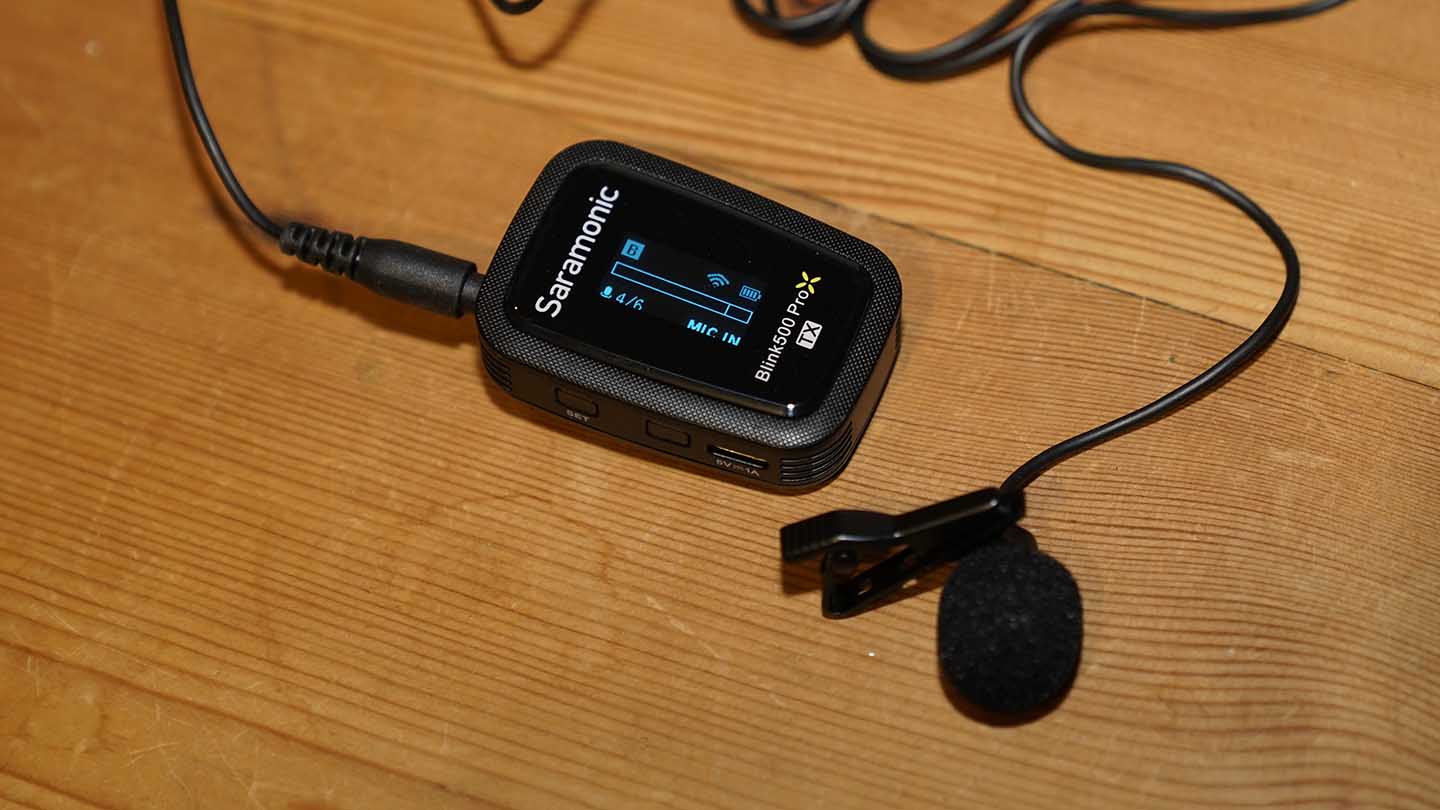The Saramonic Blink500 ProX B2 is extremely easy to set up. Clip in place and attach the Lavalier mics if required; adjust the input volume, and the transmitters are ready.
The small clip is small but will clip tightly onto a belt without issue and hold firm onto a strap or clothing. The high quality of the units stands out and makes them easy to attach. Adjustments are equally easy, with the two buttons on the side enabling you to adjust input volume and the single button on the opposite side enabling a quick mute of the mic in case you’re nipping off to the loo and don’t want to unmic.
Holding down the Set / + button for a prolonged period takes you to the options where you can change language and pair the units. As the system does most things for you, all you’ll really need to adjust is the input volume (Gain).

The TX is similar in design with a similar layout. Again attaching and fitting to the system is straightforward; plugin, and you’re almost set to go. The two-channel levels show the input volume, and you can adjust the input again. If you’re in Mono mode, then it’s important to level out the audio volume of the two mics; in Stereo mode, you have a little more leniency as the volumes of the channels can be altered in the edit; however, for the best quality, it’s a good idea to get it sorted out at the outset.
A nice feature of the RX is that it has a screen for a visual representation of the audio input volume, and then there’s the headphone input. Once the input on the wireless system is set, you can double-check on the camera itself.
Starting to record and the ability to split the mics over a stereo feed pays off, especially if one of your interviewees is slightly louder in an interview than they were in the audio check. The ability to adjust one channel in the edit is incredibly valuable and easy compared with tackling that type of issue on a mono-track.
Small additional features like muting the mic save time, and the ability to easily plug in external mics without needing to select the input makes these mics stand out.
Regarding the audio quality, the mics performed well as direct pick-ups using the built-in mics and when utilising the lavalier mics, which would be my preference.

What stands out about this mic system is that it is so easy to use. From the moment you open the case, the three units spring to life and power up, so you don’t have to switch them on. Then as they channel hop automatically to find a clear channel, there’s no need to pair or select channels or groups. The system does it all for you. Just pop them on, and off you go.
Likewise, volume or gain adjustment is quick and easy to adjust, with the small OLED screens showing the information you need and making things easy to select and find once you know how. On that front, the online manual is a little tricky to navigate, but essentially to switch between mono and stereo on the units, hold down the Set button for around three seconds, push the – button to the Output Mode, hold down set again until Mono is highlighted, tap the – button to change to Stereo, then hold down Set again. Easy once you know how!









